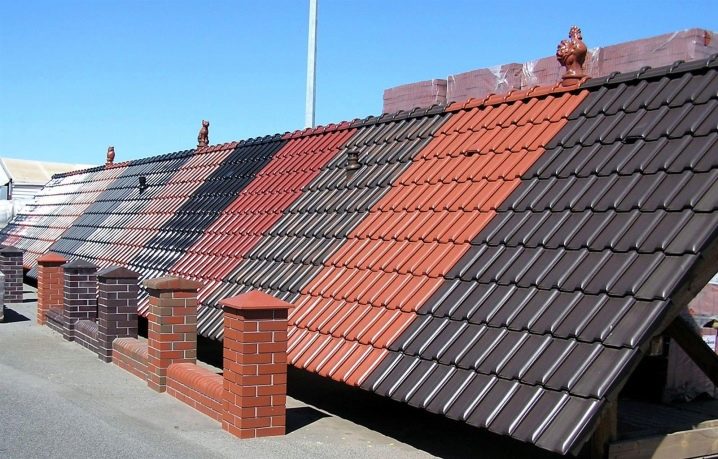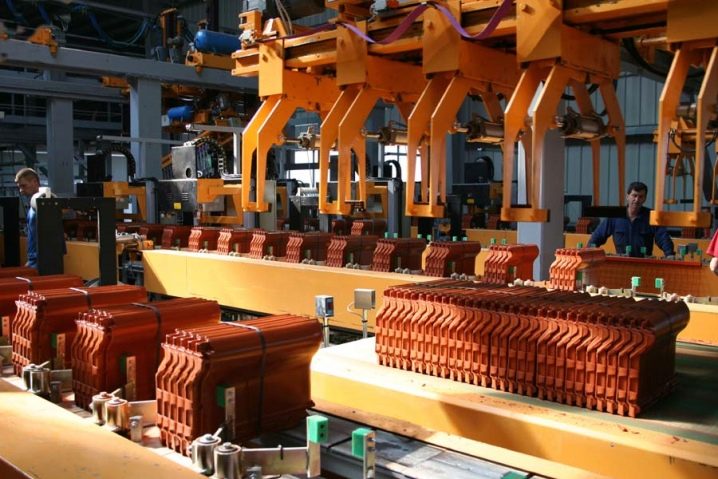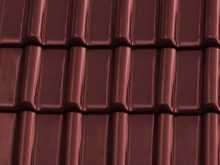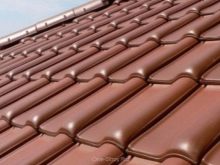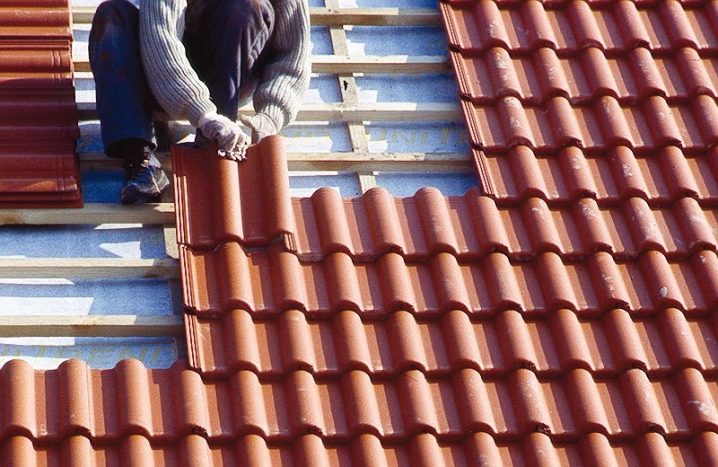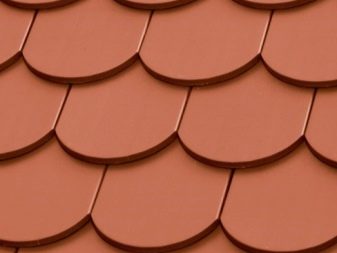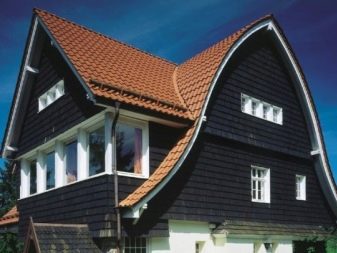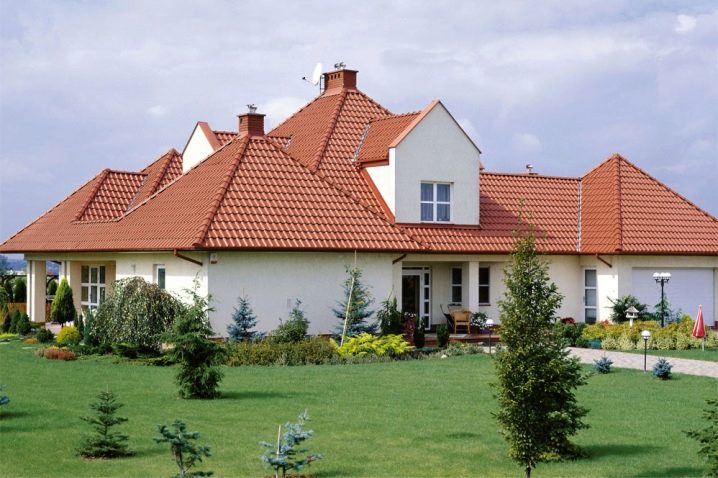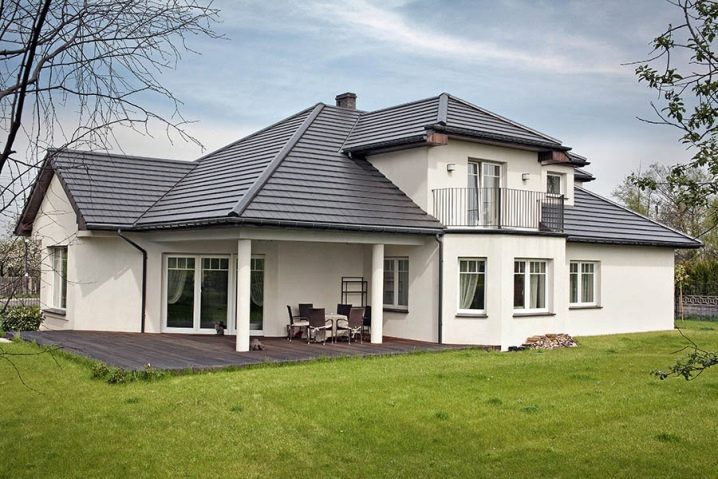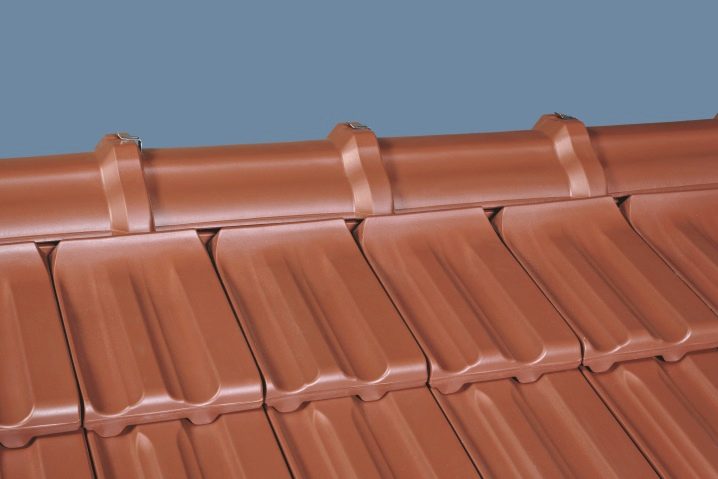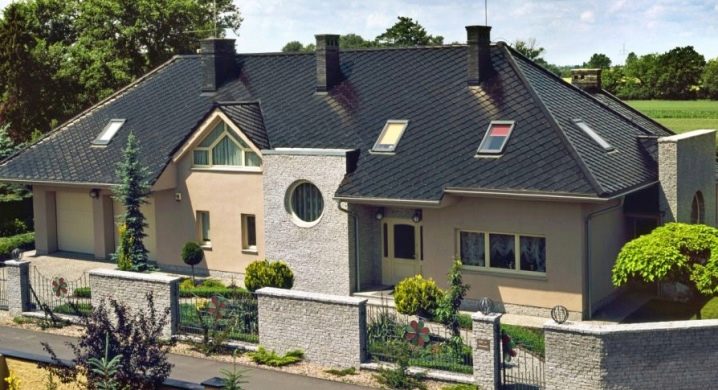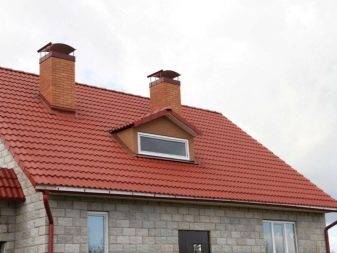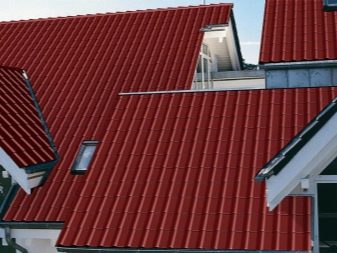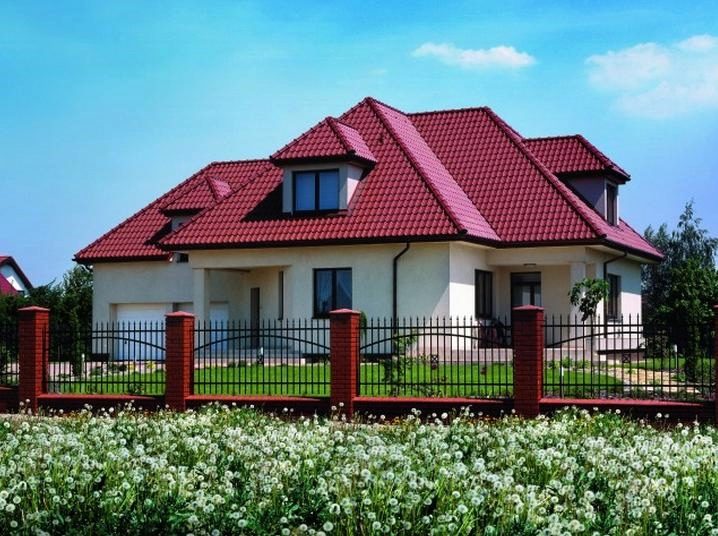Braas ceramic tiles: usage features and range overview

Over the years, shingles remain a popular roofing material. One of the world leaders in the production and sale of roofing coatings is the German company Braas. The materials produced by this company are of high quality and durability. Let us consider in more detail the features of the use of ceramic tiles Braas and will review the range of coatings in this article.
Main characteristics
The German company Braas is known not only in Germany, but throughout the world as a manufacturer of high-quality tiles. Over the years, natural cement-sand and ceramic roofing materials Braas do not lose their popularity.Ceramic tile differs from the sand-cement roof thickness, shape and shade.
Ceramic coating has high strength and can withstand point loads weighing up to 200 kg. The roof made of ceramics easily withstands the effects of precipitation, gusting wind, temperature difference and protects the roof from damage. In the event of damage to several ceramic plates, they can be easily replaced and not disassembled the entire structure.
Braas ceramic tiles are given a 30-year branded warranty.
This coating has a high service life and can last more than a hundred years. Specifications and color of the material after the time does not deteriorate You can purchase not only any Brass tile model from official dealers, but also all the necessary additional elements for the roof.
Production features
Ceramic coating is made of clay of various grades. Clay material passes the firing temperature at 1000 degrees. Thanks to this technology of making tiles, the finished coating has not only high durability, but also has a beautiful rich brown-red color.For the production of models of other shades, the material undergoes glazing before firing or is pigmented with dyes.
By production of a ceramic roof only ecological materials and natural dyes are used. All raw materials undergo quality control. Minerals, which are used to paint the tiles, have properties to change shade depending on the effects of a certain temperature. To obtain the desired color in the firing process, the coating is exposed to the desired temperature.
The process of drying the finished tiles takes place in specially equipped chambers with maintaining a special temperature. Thanks to a special drying technology, the material acquires high strength.
Pros and cons of the material
Braas ceramic tile has many advantages over other roofing materials.
Highlight the main advantages of this coverage:
- a wide range that allows you to choose the material of the desired shape and shade;
- when installing the coating between the plates, small gaps remain, due to which additional ventilation is created (since the area between the roof covering and the roof is well ventilated, condensate will not settle there);
- material is made only from high-quality and environmentally friendly components;
- frost resistance and fire safety;
- possesses sound insulation properties;
- reliable fastening on the surface of the roof due to the lock type of connection of ceramic tiles;
- the coating has high strength and resistance to deformation;
- weather resistance;
- ease of installation and disassembly;
- the coating does not require additional care.
Like all roofing materials, Braas ceramic tiles also have their drawbacks.
The main disadvantages of this coverage include:
- in contrast to cement-sand tiles, ceramic coating has a higher cost;
- during installation, it is necessary to comply with all the requirements for the formation of this coating, since in case of insufficient angle of inclination of the roof water may accumulate on the plates;
- the installation of the tile is not particularly difficult, but rather time-consuming, so often for the installation of the coating resort to the help of professionals, which increases the total cost of finishing work.
Kinds
The range of ceramic roofing Braas is quite wide.Each model has a unique appearance and differs in some characteristics.
"Opal"
The Opal tile model has a flat rounded shape that visually resembles a beaver's tail. The material combines classic design and modern technical characteristics. This model is available with both matte and glossy surfaces in 14 color variations.
Gallean
Modification "Gallean" different Mediterranean design. The color palette of the coating provides ample opportunities for the implementation of various design decisions.
"Agate"
The model is characterized by a wavy shape and a groove design. Visually, this coating looks easy and elegant. The color gamut of the model is not so diverse and is represented by popular shades themselves.
Amber
Tile Amber has a small weight and is available in two color variations: naturally red and brown. The recommended roof inclination level for mounting the material is 16 degrees. Fixing plates is carried out using the locking system.
"Tourmaline"
Model "Tourmaline" is made in a modern design and is ideal for cottages in the style of "hi-tech".The plates have a special coating that makes the material smooth and resistant to various contaminants. Visually, the roof resembles a coating of polished stone tiles.
"Sapphire"
"Sapphire" - a grooving model of a classic design. Tiling creates a strict geometric coating, which is characterized by sharpness of the contours. The model is traditional for the north of Germany.
"Garnet"
Modification "Pomegranate" has a two-wave form. The model is characterized by a minimum flow rate, which is about 11.5 plates per meter2. Installation of this design does not take much time and effort.
"Emerald"
Tile "Emerald" has an unusual diamond shape. The smooth and smooth surface of the material well protects the roof from precipitation. The recommended roof inclination parameters for tile installation are 16 degrees.
"Ruby"
The Rubin model is available in three different variations: 9V, 11V, 13V. All modifications have a similar appearance, but differ in color and some technical characteristics. In total, this model has the maximum number of various color options.The tile "Rubin" perfectly will be suitable for any architectural style and can be established both on flat, and on abrupt roofs.
"Amber"
Variety "Amber" has a light wave-like form. The plates form a soft relief on the roof surface, which harmoniously combines with any landscape design. The color scheme is represented by two shades: red and green.
"Sirius"
The Sirius model is ideal for regions that are characterized by heavy rainfall. This type of tile is characterized by increased water resistance and resistance to direct sunlight. Another advantage of the model "Sirius" are excellent noise insulation characteristics.
Installation
The installation process of Braas tiles depends on the characteristics of the selected material model. Each modification has its own distinctive features, specifications and recommendations for the angle of inclination of the roof.
It should be remembered that if the angle of the slope is below the permissible value, then a waterproofing layer must be installed under the coating. When the angle of inclination is higher than the threshold value, the plates are additionally fastened using self-tapping screws or roof clamps.
For the formation of the required level of ventilation under the roofing material, it is recommended to install a counter grill. Laying tiles produced in order from right to left. Models that have a flat shape can be laid out in a staggered manner.
Installation of ceramic natural tiles BRAAS, see the following video.
